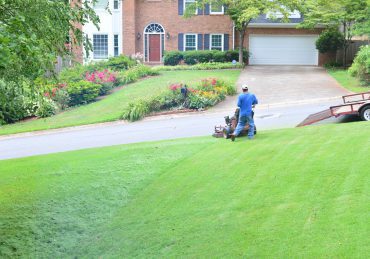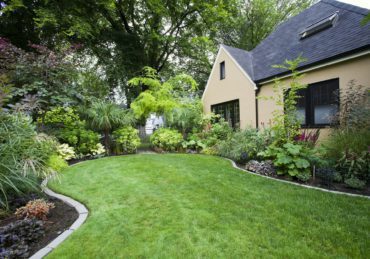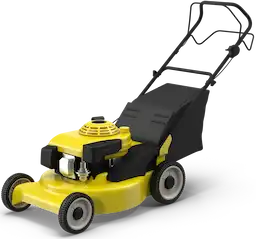Why Choosing the Right Grass for Dogs Matters
Selecting the right grass for your yard is crucial when you have dogs, as it directly impacts both your pets’ well-being and the appearance of your lawn. Dogs are often tough on grass, with constant running, digging, and bathroom breaks that can lead to damaged patches. The right grass can withstand this wear and tear, staying resilient and healthy even with heavy use. Certain grass varieties are more resistant to digging, trampling, and pet urine, minimizing unsightly brown spots and bare patches. Additionally, some types of grass are softer and safer for dogs, reducing the risk of injury from hard or sharp blades. A well-chosen grass ensures that your lawn remains lush and green while providing a comfortable, safe environment for your pets to enjoy. Investing in the right type of grass not only enhances your yard’s appearance but also promotes your dogs’ comfort and outdoor happiness.
Importance of Resilience and Recovery
Dogs can cause significant damage to lawns through activities like running, digging, and frequent bathroom use. Constant running and playing can wear down grass, creating bald spots, while digging disrupts the root structure, leaving unsightly holes. Additionally, urine can lead to brown or yellow patches due to the high nitrogen content. To maintain a healthy lawn, it’s essential to choose grass types with rapid growth rates and deep root systems. These grasses are more resilient, capable of recovering quickly from wear and tear. Rapid growth helps repair damaged areas faster, while deep roots provide stability and help the grass absorb nutrients and water efficiently. This combination ensures your lawn stays lush, even with energetic pets around.
Easily hire the best lawn & landscape pros working in your neighborhood.
Benefits of a Dog-Friendly Lawn
Having durable grass offers numerous benefits, especially for households with active outdoor lifestyles or pets. One major advantage is fewer bald spots, as robust grass varieties are better equipped to withstand high foot traffic, pet activity, and weather changes. This resilience helps maintain a consistent, lush appearance throughout the year. A healthier lawn is another benefit, as strong grass is less prone to disease, pests, and damage from environmental stressors. Durable grass also has deeper root systems, which improve soil stability and enhance water retention, reducing the need for frequent watering and fertilization. Furthermore, lawns with hardy grass require less maintenance, as they recover quickly from wear and tear, minimizing the need for constant reseeding or patching.
Top Dog-Friendly Grass Varieties
When selecting dog-friendly grass varieties, several options offer both durability and comfort for pets. Bermuda grass is a popular choice for its rapid growth and ability to recover quickly from heavy use, making it ideal for active dogs. Zoysia is another hardy variety know for its dense growth, which helps resist digging and wear. Kentucky blue grass stands out for its soft texture, offering comfort for pets, while its rapid growth helps it bounce back from damage. Tall fescue is drought-resistance and has deep roots, making it excellent for high-traffic areas and less susceptible for pet urine damage. Perennial ryegrass is valued for its quick germination, making it a great option for fast repair. Lastly, centipede grass, while slow-growing, is low-maintenance. These grass varieties each bring unique benefits, ensuring a resilience, pet-friendly lawn.
Bermuda Grass
Bermuda grass is know for its exceptional durability, making it ideal for households with active dogs. Its dense, tough blades can withstand heavy paw traffic, recovering quickly from running, playing, and roughhousing. This grass also has a rapid growth rate, ensuring damages areas fill in fast. Additionally, Bermuda grass is drought-tolerant and thrives in warm climates, requiring less water and creating a low-maintenance lawn. Its ability to handle wear and tear while staying green makes it a top choice for homeowners with active pets.
Zoysia Grass
Zoysia grass is highly durable, featuring a deep root system that provides excellent resistance to wear, making it perfect for active dogs. Its dense growth pattern helps prevent damage from running and digging, while also naturally choking out weeds. Zoysia is exceptionally drought-tolerant, requiring less water compared to other varieties, which reduces maintenance. Additionally, it offers a soft texture, providing a comfortable surface for pets to play on. Its resilience and low upkeep make it an excellent choice for dog-friendly lawns.
Kentucky Bluegrass
Kentucky bluegrass is prized for its lush, dense appearance, creating a soft and visually appealing lawn. Its rapid recovery rate makes it ideal for homes with active pets, as it quickly fills in damaged or worn areas. This cool-season grass thrives in cooler climates, maintaining its vibrant green color even in lower temperatures. With proper care, Kentucky bluegrass is resilient against foot traffic and provides a comfortable, durable surface for pets to play on, making it a great option for pet owners.
Tall Fescue
Tall fescue is a highly durable grass variety, known for its adaptability to different soil types and climates. Its deep root system allows it to withstand heavy foot traffic, making it ideal for pet owners. Tall fescue grass is also resistant to damage from pet urine, as it tolerates high nitrogen levels better compared to other grasses. Additionally, it handles drought well and requires less water, reducing maintenance. Its versatility and resilience make fall fescue an excellent choice for pet owners.
Perennial Ryegrass
Perennial rye grass is valued for its rapid germination, making it an excellent choice for overseeding and quickly repairing damaged lawns. This fast-growing grass establishes itself quickly, helping to fill in bare spots causes by high traffic or pet activity. Its quick recovery rate ensures your lawn remains lush and green, even with constant use. Perennial ryegrass is also known for its durability and tolerance to wear, providing a resilient, pet-friendly surface that stay vibrant and healthy throughout the year.
Centipede Grass
Centipede grass is best suited for warm climates, thriving in areas with ample sunlight and heat. Known for its low-maintenance requirements, this grass type is perfect for homeowners seeking a lush lawn without extensive upkeep compared to other grass types. While it may not be as resilient as some other varieties, centipede grass can handle occasional pet traffic, making it suitable for dog owners. Its ability to establish itself quickly and tolerate moderate wear makes it a practical choice for homeowners.
Easily hire the best lawn & landscape pros working in your neighborhood.
How to Choose the Best Grass for Your Dog
Choosing the best grass for your dog involves several key considerations to ensure a healthy and resilient lawn that meets your pet’s needs. First, assess your climate, as certain grass types thrive better in specific temperatures and weather conditions. Next, evaluate your yard’s specific conditions, including sunlight exposure and soil type, which can affect grass growth. Additionally, consider your pet’s activity level; high-energy dogs may require more durable grasses that can withstand heavy foot traffic and wear. Look for grass varieties that offer quick recovery rates, deep root systems, and resistance to pet-related damage, such as urine burns or digging. By factoring in climate, yard conditions, and your dog’s play habits, you can choose the best dog-friendly grass that’ll keep both your lawn and your pet happy.
Climate Considerations
Understanding the difference between cool-season and warm-season grasses is crucial for choosing the right type for your lawn. Cool-season grasses, such as Kentucky bluegrass and tall fescue, thrive in northern climates with moderate temperatures, flourishing during spring and fall when temperatures are cooler. They require frequent watering and are more susceptible to heat stress in the summer. In contrast, warm-season grasses like Bermuda grass and Zoysia are ideal for southern regions, where they thrive in higher temperatures and areas that experience full sun. These grasses grow best during the summer months, entering dormancy in colder seasons. Selecting the appropriate grass type based on your climate ensures that you have the best grass type for your area and growing conditions.
Yard Characteristics
When exploring the best grass for dogs, considering factors such as yard size, shade, and soil type is essential for achieving a healthy, durable lawn. Yard size influence the amount of grass needed and how much wear and tear the grass will experience from pet activity. Smaller spaces may require more resilient varieties that can recover quickly from damage. Shade is another critical factor; some grass types thrive in full sun, while others, like fine fescue, have a higher shade tolerance and perform better in shaded areas. Additionally, soil type affects drainage and nutrient availability; sandy soils may require more frequent watering, whereas clay soils can retain moisture but may compact easily. Carefully evaluating these factors can help you choose a grass variety that is tailored to your yard and pets needs.
Protecting Your Lawn from Dog Damage
Protecting your lawn from dog damage is essential for maintaining its health and aesthetic appeal. One of the primary issues is urine, which can cause unsightly brown spots due to its high nitrogen content, leading to an imbalance in soil nutrients. This damage often requires reseeding or specialized treatments to restore the grass. Additionally, digging can create holes and disrupt the grass’s root structure, leading to further deterioration and unsightly dead spots. Running and playing can compact the soil and wear down grass blades, creating bald spots that diminish the lawn’s overall appearance. By proactively addressing these potential issues, such as selecting durable grass varieties and establishing designated play areas, you can minimize damage and promote a vibrant, healthy lawn.
Urine Damage
Preventing and repairing urine spots on your lawn involves a few effective strategies. One of the best preventative measures is to water the area immediately after your dog urinates, which helps dilute the nitrogen and reduces the risk of brown spots. Additionally, consider using urine-resistant grass types, such as tall fescue or Zoysia, which are more tolerant of nitrogen and recover quickly from damage. If brown spots do occur, overseed the affected areas with appropriate grass seed to encourage regrowth. Regular lawn care and mowing, including fertilization and aeration, can also enhance overall grass health and resilience, making it less susceptible to urine damage.
Digging and Running
Managing dog behavior that causes lawn damage can be achieve through various strategies. Creating designated digging areas encourages your dog to dig in specific spots, helping protect your lawn while satisfying their natural instincts. Additionally, using durable grass types, such as Bermuda grass or Zoysia, can withstand wear and tear, making them ideal for active dogs. Training your dog to follow specific routines, like potty breaks in designated spots, can also reduce urine damage. Providing engaging toys and activities can redirect your dog’s energy away from destructive behaviors, ultimately preserving your lawn and creating a more harmonious outdoor space for everyone.
Is Artificial Grass a Good Option for Dog Owners?
Artificial turf offers several advantages, particularly for pet owners seeking a durable and low-maintenance lawn solution. One of the primary benefits is its exceptional durability; artificial grass can withstand heavy foot traffic and vigorous play, making it ideal for energetic dogs. Additionally, unlike natural grass, it requires minimal upkeep. No mowing, watering, or fertilizing is necessary, saving time and energy. This type of turf also provides a consistent playing surface that can withstand various weather conditions.
However, there are some drawbacks to consider, Regular cleaning is essential to maintain hygiene, as dog waste and debris can accumulate on the surface. This cleaning process typically involves hosing down the turf and using specialized cleaners to eliminate odors and bacteria, which can be time-consuming. Another potential concern is dog comfort; while artificial grass is designed to mimic the feel of natural grass, it can heat up significantly in direct sunlight, making it uncomfortable for pets to walk on during hot days. Moreover, some dogs may prefer the natural scent and texture of real grass. Ultimately, while artificial turf presents an attractive option for its resilience and ease of maintenance, pet owners should weight these pros and cons to determine if it meets their needs and those of their furry friend.
Maintaining a Dog-Friendly Lawn
Keeping a lawn healthy requires consistent care and attention, especially in areas frequented by pets. Regular watering is crucial; aim for deep watering sessions about 1 to 1.5 inches per week to encourage deep root growth and resilience against heat and drought. Incorporating overseeding into your lawn care routine helps to fill in bare patches and improve overall grass density, enhancing the lawn’s ability to withstand wear and tear. Early spring or fall is the idea time for overseeding, as temperatures are more favorable for grass growth.
Additionally, creating shaded areas in your yard can help prevent certain spots from becoming overused, allowing grass in those areas to recover. Shade can be provided by planting trees or installing shade structures, offering a cooler retreat for your pets and protecting grass from sun damage. Also consider rotating play areas to distribute wear evenly across your lawn; this prevents any single spot from becoming too compacted or damaged. Regularly aerating the soil also promotes healthy growth by improving water penetration and nutrient absorption. By implementing these strategies, you can maintain a lush, resilient lawn that remains comfortable and safe for you dogs while enhancing your outdoor space’s overall beauty.
Easily hire the best lawn & landscape pros working in your neighborhood.
When to Hire a Lawn Care Professional
Consulting a professional for installing or maintaining a dog-friendly lawn can be beneficial in several scenarios. If you’re unsure about which grass type is best suited for your climate, soil conditions, and pet activity levels, a landscaping expert can provide valuable insights tailored to your specific needs. Professionals can also assist in designing a lawn that incorporates durable grass varieties and strategically placed shaded areas to prevent overuse. Additionally, if your lawn is already damaged or struggling to recover from pet wear and tear, a professional can assess the situation and recommend effective solutions, such as soil amendments or specialized overseeding techniques. For those considering installing artificial turf, consulting with an expert ensures proper selection, installation, and maintenance to maximize comfort and durability. Ultimately, professional guidance can save time, prevent costly mistakes, and create a safe, vibrant outdoor space for both you and your dogs to enjoy. Get quotes from the best in your area with LawnGuru for sodding or other lawn care services!
FAQ on Grass for Dogs
When selecting grass for dogs, common questions often arise about durability, maintenance, and pet safety. One of the most frequently asked questions is, “What grass is most durable for active dogs?” Varieties like Bermuda grass, Zoysia, and tall fescue are top choices due to their resilience and quick recovering from wear. Another concern is lawn damage from dog urine and what grass type can resist urine damage. Additionally, some pet owners wonder, “Is there a low-maintenance grass option?” Warm-season grasses like Zoysia are not only durable but also require less watering and mowing. It’s important to consider your climate and soil type when selecting grass, ensuring the choice matches both your region’s climate and your dog’s activity level for a healthy, vibrant lawn.
What Grass Is Most Resistant to Dog Urine?
Tall fescue is one of the most resistant grass types to dog urine due to its deep root system and tolerance to high nitrogen levels. It recovers well from damage and is drought-tolerant, making it a resilient choice for lawns with pets. Another option is perennial ryegrass, which germinates quickly and is more urine-resistant than other grasses, allowing it to handle pet waste better. Zoysia is also a durable warm-season grass that can resist moderate pet urine damage. However, even with resistant grasses, it’s important to dilute urine by watering the area promptly after your dog urinates. This practice can help reduce the risk of brown spots, even on resilient lawns.
How Do You Revive Grass After Dog Pee?
To revive grass after dog pee, start by flushing the affected area with water immediately to dilute the nitrogen and reduce the risk of brown spots. For existing damage, rake away the dead grass and apply a lawn repair mix or overseed with a urine-resistant grass type like tall fescue or perennial ryegrass. Use a soil conditioner or gypsum to neutralize excess nitrogen and improve soil health. Fertilizing with a balanced, pet-safe fertilizer can also encourage new growth. Regularly water the repaired spots to help the new grass establish. Additionally, training your dog to use specific areas or rotating play spots can prevent overuse and minimize future damage to your lawn.
Will My Dog Get Sick if They Eat Grass?
In most cases, eating grass is not harmful to dogs, and many do it occasionally without getting sick. Dogs may eat grass out of boredom, to aid digestion, or simply because they enjoy the taste. However, if your dog eats large quantities of grass, it may cause vomiting, which could indicate an upset stomach. It’s important to ensure the grass they consume is free from harmful chemicals like pesticides, herbicides, or fertilizers, which can be toxic. If your dog frequently eats grass and vomit, or if the behavior becomes excessive, it’s a good idea to consult a vet to rule out any underlying health issues or nutritional deficiencies.





